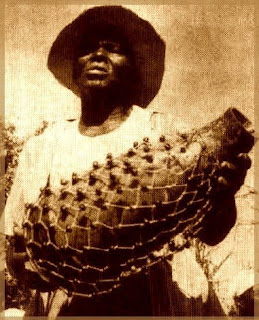Just finished this shekere. I like how the gourds color matches the wood beads. Very natural looking. This gourd ended up having a nice brisk action. It has a very large and wide bottom that is easy to strike with the hand for a booming tone. The crisp sound of the beads contrasts with the deep open tone very well. All in all a great sounding and easy playing instrument. As I said it's going to my friend Oliver, n excellent jazz flautists and all around nice guy.
I've got plenty more shekeres to make, but I'll try and focus on some differnt sorts of posts in the near future.
I've got plenty more shekeres to make, but I'll try and focus on some differnt sorts of posts in the near future.





























